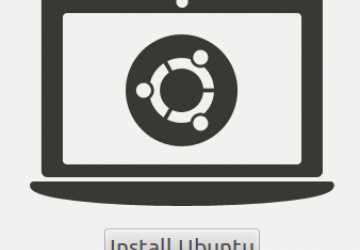Talking Point: Should Distros Stick to CDR Size?

It's starting to look like the end of an era for Ubuntu users as Canonical mull the creation of an ISO that won't fit onto a CDR. The question is, does it matter?
Canonical owes at least part of its success with Ubuntu Linux to the unique way that it has been distributed. From the start it has been available as a downloadable ISO image and a free CD, posted at no cost to the user. This was great news for people who wanted to install Linux but did not have the luxury of a decent Internet connection. In a sense, installing via a CDR image has always been like a kind of cache, in that you're moving part of the content that you need onto permanent storage rather than pulling it through the network connection.
Things have changed since Ubuntu made its debut in 2004, and far more people now have a decent Internet connection. In addition, the CDR format itself is beginning to fall out of favor. The majority of computers that are suitable for use as an Ubuntu-powered desktop are capable of booting from a flashdrive, a more flexible and higher capacity medium.
So, should Canonical (and other creators of Linux distros) make an extra effort to squeeze Ubuntu 12.04 onto a CDR?
Some have argued that attempting to adhere to the size limit for a CDR forces the developers into a disciplined approach to resisting bloat. Once the 700MB limit for the basic install is breached, what should the limit be, and does it matter? Within reason, a large percentage of the potential install base for distros like Ubuntu can fetch a boot medium of almost any size. The next convenient milestone would be around 4GB as it's a common size for smaller flashdrives and close to the limit for a single layer DVD-R.
As for the people who still have a slow connection, there are solutions that are better than the traditional one of downloading an ISO and then burning it to a CD, such as arranging to have the installation medium sent through the mail or arranging an organization-wide cache for a network-based installation.
As Shawn pointed out recently, a smaller, but incomplete, installation medium such as an Ubuntu or Debian Netinstall carries with it a few advantages such as allowing you to begin with an up to date set of packages. It’s possible that such a way of working may involve a lower amount of network traffic than booting from a full CD and then updating to replace some of the packages.
Another option would be for Canonical to offer an Ubuntu Lite version with a minimal desktop and few major applications. Although, this approach probably clashes with the overall Ubuntu ethos to ship with a complete, standardized desktop.
In conclusion, I wonder if a few of the major distros will soon drop the familiar 700MB ISO entirely. The number of people who want to install standard Ubuntu but can't manage a download any bigger than the normal ISO, or who can't boot of any medium other than CDR is going to be pretty small these days.










